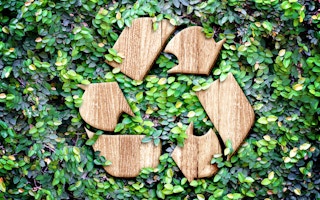As businesses and governments worldwide seek to meet the food, water and energy needs of a rapidly growing population, there are mounting concerns about environmental degradation and resource scarcity.
To continue reading, subscribe to Eco‑Business.
There's something for everyone. We offer a range of subscription plans.
- Access our stories and receive our Insights Weekly newsletter with the free EB Member plan.
- Unlock unlimited access to our content and archive with EB Circle.
- Publish your content with EB Premium.
It is especially ironic that, against this backdrop, managing waste safely and effectively remains a challenge in so many parts of the world.
For example, 8 million tonnes of plastic waste are dumped into our oceans every year, according to scientists at University of Georgia’s National Center for Ecological Analysis and Synthesis. And a third of the food produced worldwide is never consumed, wasting US$400 billion a year, says the Food and Agriculture Organization.
These trends make it increasingly clear that our current linear production and consumption model of “take, make and dispose” is simply not sustainable.
We can no longer afford to use up our limited resources and create more waste. We have to change our mode of consumption, and one alternative model that is fast gaining traction is the circular economy.
The circular economy is an industrial system that focuses on restoration and regeneration, rather than disposal and waste. This is achieved through the design of materials, products, systems, and business models.
It also promotes renewable energy use and aims to eliminate the use of toxic chemicals, which make it difficult to recycle or reuse products.
The circular economy involves two types of materials: biological materials that are usually plant-based and non-toxic and can be returned back to the environment safely; and technical materials that can be recycled and that are circulated within the economy with minimal loss of quality.
A circular flow of both these types of materials can be achieved by designing products better, adopting systems thinking – viewing individual things as part of one system and understanding how they influence one another - and focusing on services and access instead of product ownership.
The benefits of the circular economy are manifold. Being able to put resources back into the supply chain at the end of a product’s life eases resource scarcity, supply risks, and price fluctuations.
Unfortunately, the shift towards this business model has not been widely adopted in Asia yet. This is a missed opportunity, and there are many ways that governments and companies can start building a circular economy.
_popup.jpg?auto=format&dpr=2&fit=max&ixlib=django-1.2.0&q=45&w=680)
Image: Ellen MacArthur Foundation
Progress in Asia
In Singapore, for example, most businesses are focused on selling more products to consumers, and there isn’t any clear regulation on mandatory recycling or Extended Producer Responsibility policies – where manufacturers are accountable for the product’s entire life cycle, including take-back, recycling, and disposal.
The term “zero waste” is sometimes used by the Singapore government, but this usually places more emphasis on recycling rather than redesign. There is also an absence of a government body looking at the sustainable design of products. The DesignSingapore Council, part of the Ministry of Communications and Information, largely focuses on aesthetics and functional aspects.
Hence, products are more likely to end up in the waste stream than be recovered. Biodegradable items such as plastic bags, containers, utensils and cutlery made from plant-based materials are usually incinerated at waste-to-energy plants and are not sent for composting or allowed to biodegrade.
However, there are some initial signs that circular economy principles are taking root not only in Singapore, but also in the rest of Asia.
For example, Seoul is positioning itself as the great “Sharing City”, a vision unveiled by Mayor Park Won-Soon in September 2012. Unused parking lots, empty rooms, kid’s clothes, furniture and even meals are being shared by citizens of the city. The government is even lending idle spaces in public facilities to other organisations and its citizens, fuelling the sharing culture.
This is gaining traction in Singapore too, with several companies providing peer-to-peer rental of items, and Waste is not Waste providing a platform for businesses to exchange unwanted items.
The Sustainable Manufacturing Centre and the Advanced Remanufacturing and Technology Centre have been working with companies on remanufacturing in Singapore over the past few years, and the waste management and recycling industry is quite vibrant, with more than 100 companies involved in waste collection and sorting, waste treatment facilities, and recycling technologies and plants.
The circular economy is also catching on in Taiwan. It has a Cradle to Cradle Strategic Association comprising government bodies, companies and civic organisations that promotes the concept among its peers. It also gives out a certification called C2C to encourage sustainable product design, manufacturing and recycling.
Here are some key opportunities to build on these trends to achieve a full-fledged circular economy in the region:
1. Set policies on the circular economy
Currently there are no government strategies addressing the potential of the circular economy. Governments should set the direction and implement policies that would reduce incineration and landfilling of waste, build resilience on materials and resources, and create new job opportunities. Regulations such as Extended Producer Responsibility and minimum recycled content could be introduced.
2. Encourage businesses to explore the circular economy
There should be more education and training for companies to increase awareness on the need, potential and skills for the circular economy. Companies have to rethink their business models, adopt systems thinking, redesign their products and processes, and explore reuse, remanufacturing and recycling.
3. Educate product designers and students
Tertiary institutions with courses on product design should be encouraged to include the concept of green design in their syllabus. Students should be exposed to circular economy concepts such as Cradle to Cradle, Biomimicry, and Design for Durability and Disassembly.
In addition, students could have attachment and internship opportunities to work with product manufacturers to redesign their products for circularity. There should also be more courses and workshops for product designers to learn about circular economy concepts and case studies.
4. Encourage repair, reuse, redistribute and sharing
Consumers should be educated that it is better to repair and reuse items rather than throw them away. Unwanted items should be redistributed or sent for recycling. They can also look at the sharing economy to share, rent, borrow, give or exchange items, instead of buying them.
5. Increase the use of biological materials
Food waste contains biological nutrients and should be collected and digested to produce biogas and fertilisers that can be safely returned back to the land.
Plastics are one of the most common types of waste generated in Asia, and are also commonly found as trash in waterways and coasts. Plastic disposables and packaging are usually not collected for recycling due to contamination and their low economic value. There could be opportunities to switch from plastic disposables and packaging to biodegradable ones, so that the material can be digested together with food waste in the digestion plants.
Eugene Tay is the Founder of Circular Economy Singapore and President of the Sharing Economy Association (Singapore). This article was written exclusively for Eco-Business.
This story was originally published in the Eco-Business Magazine. Download the latest issue here.











